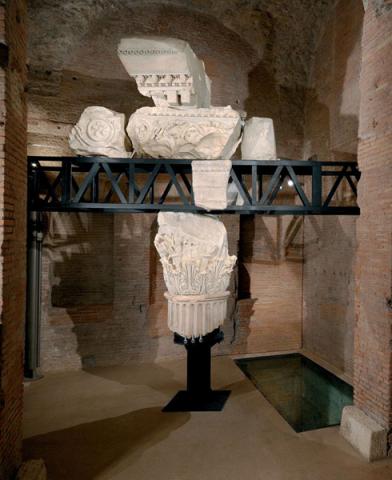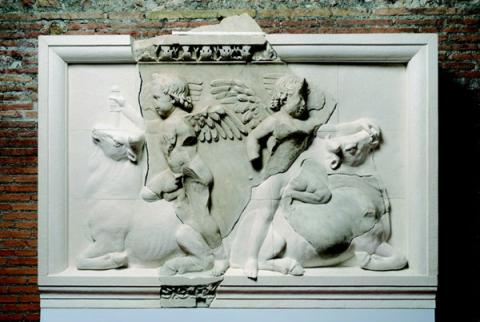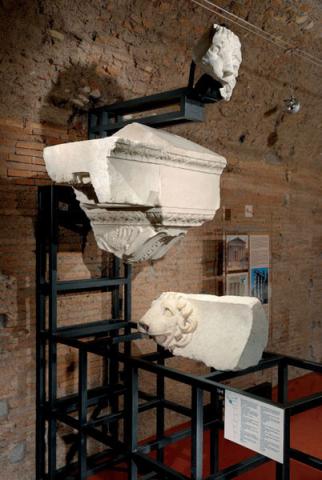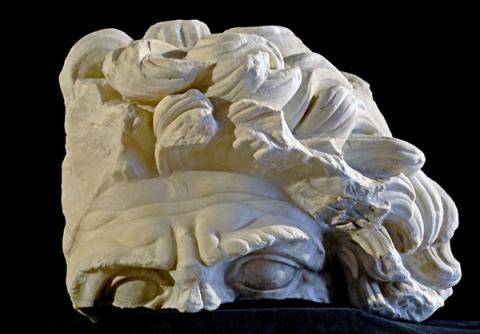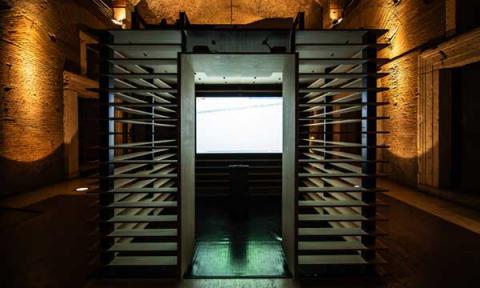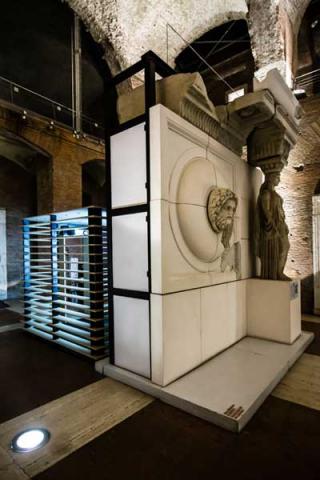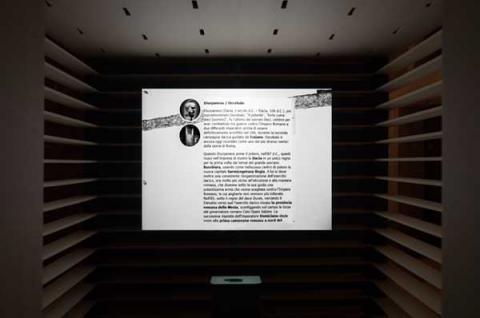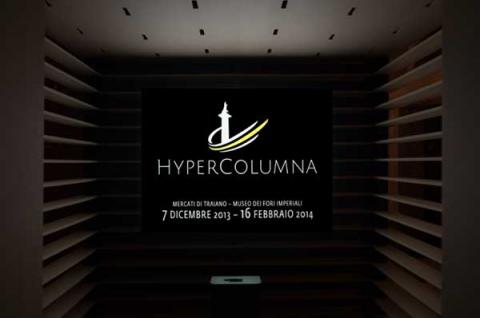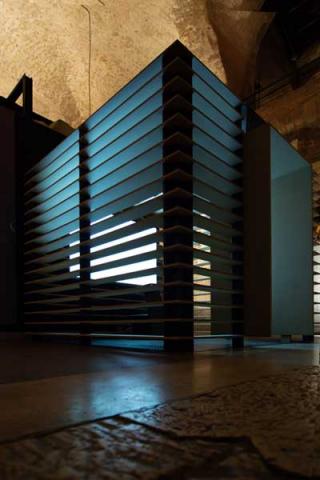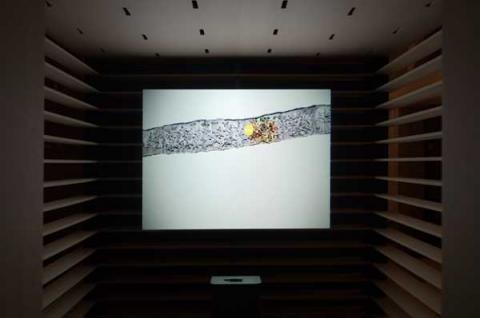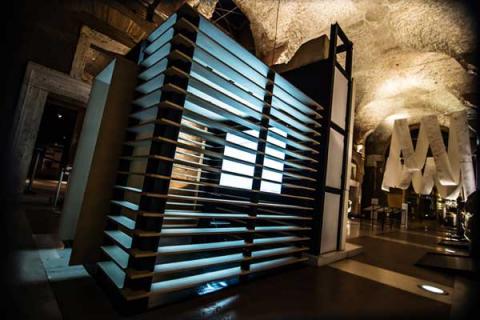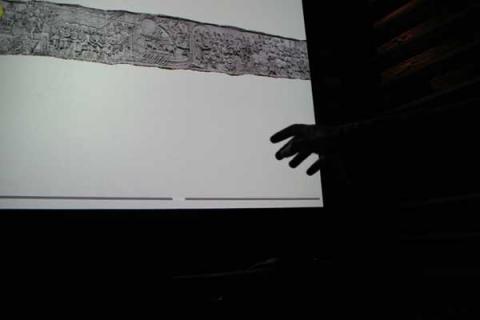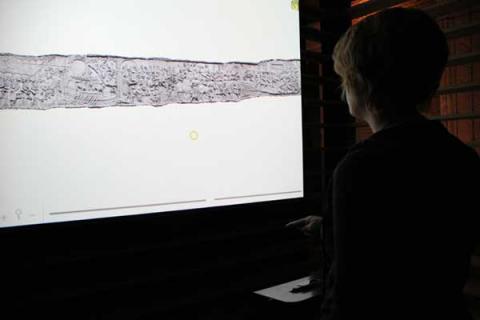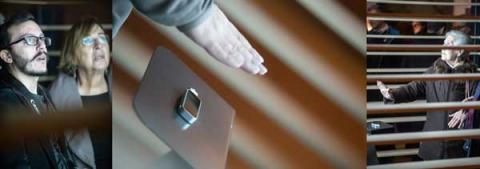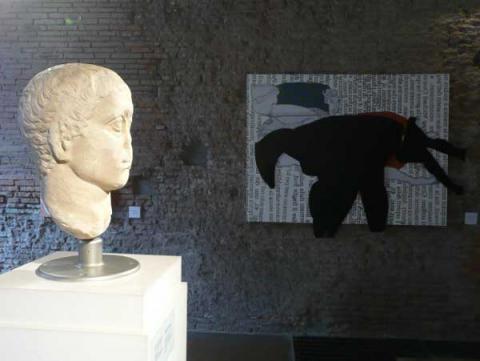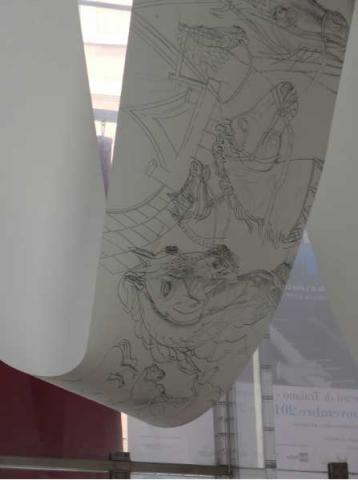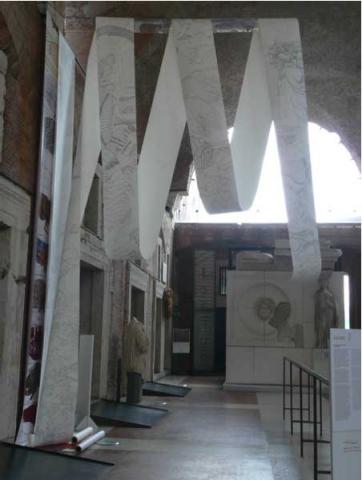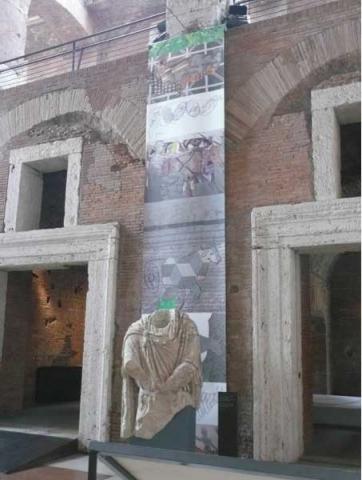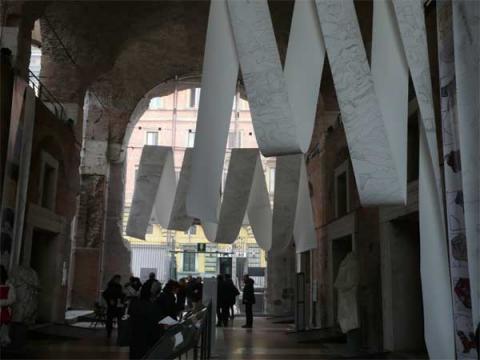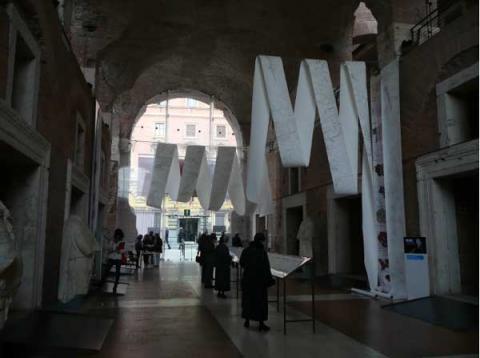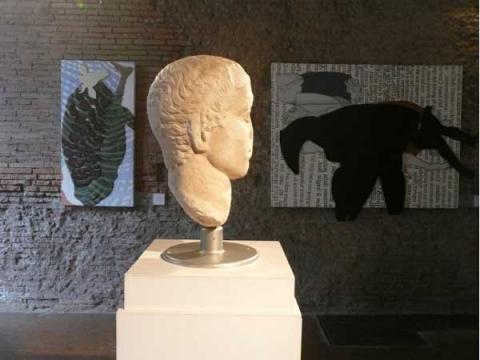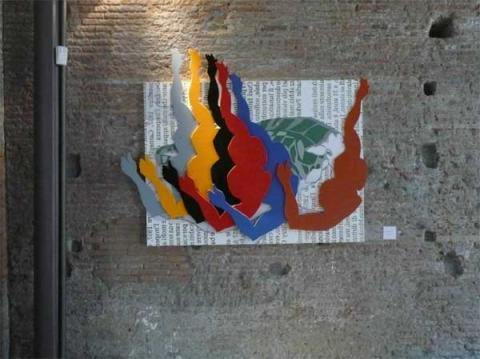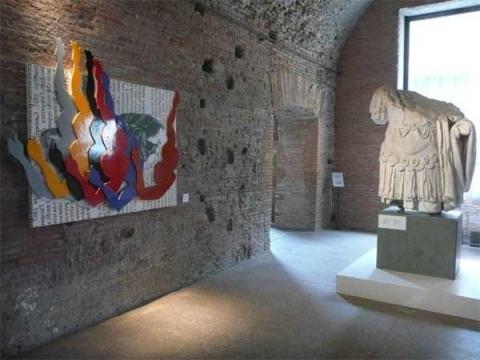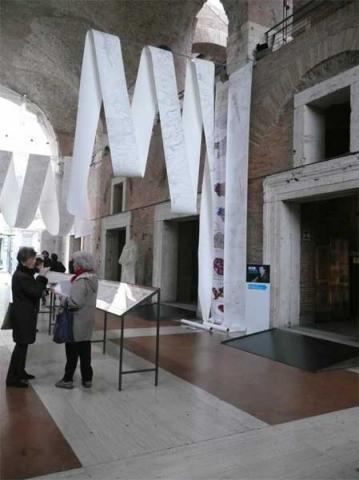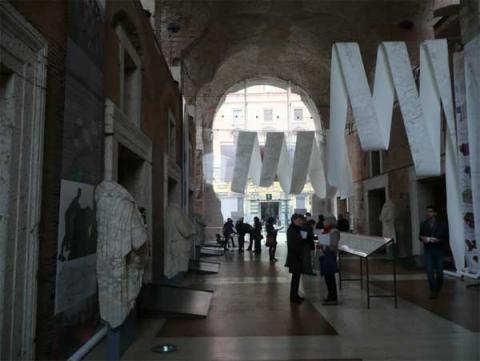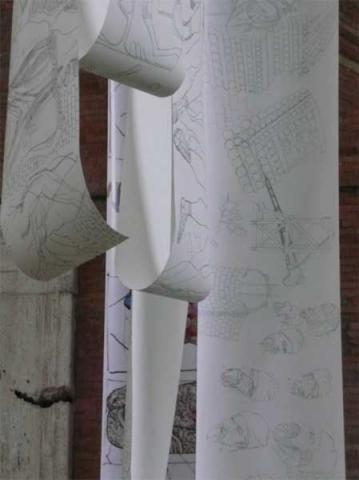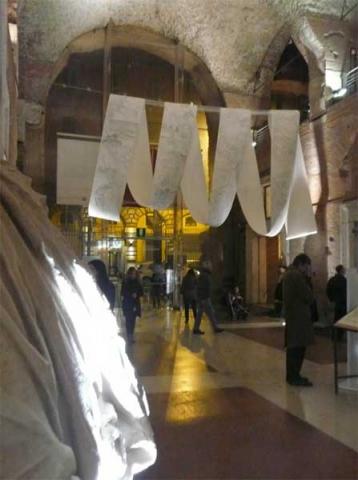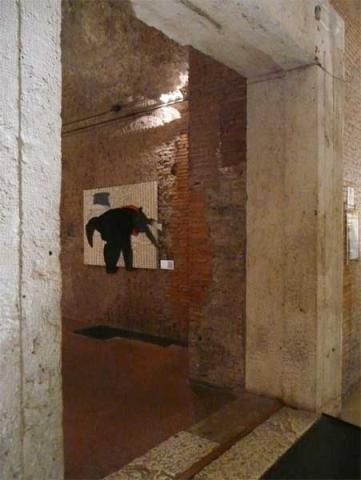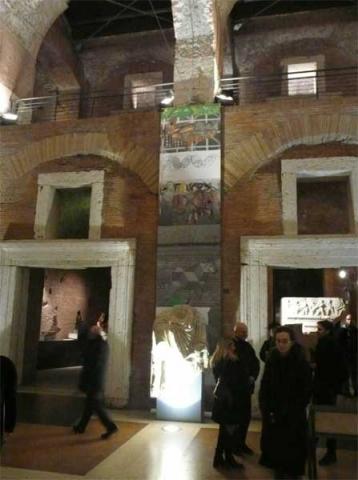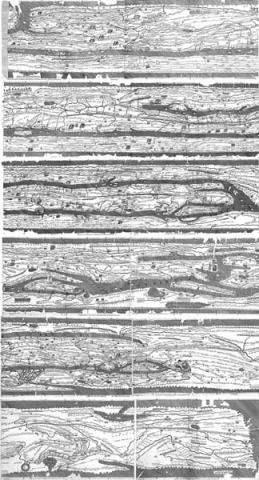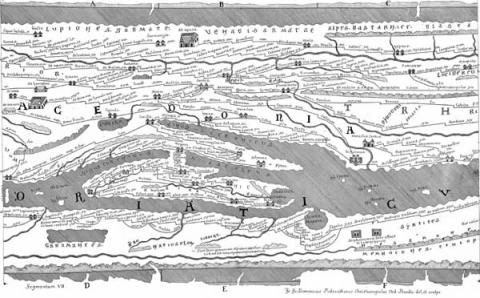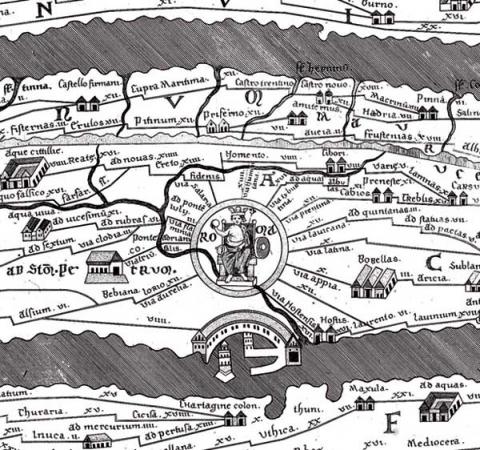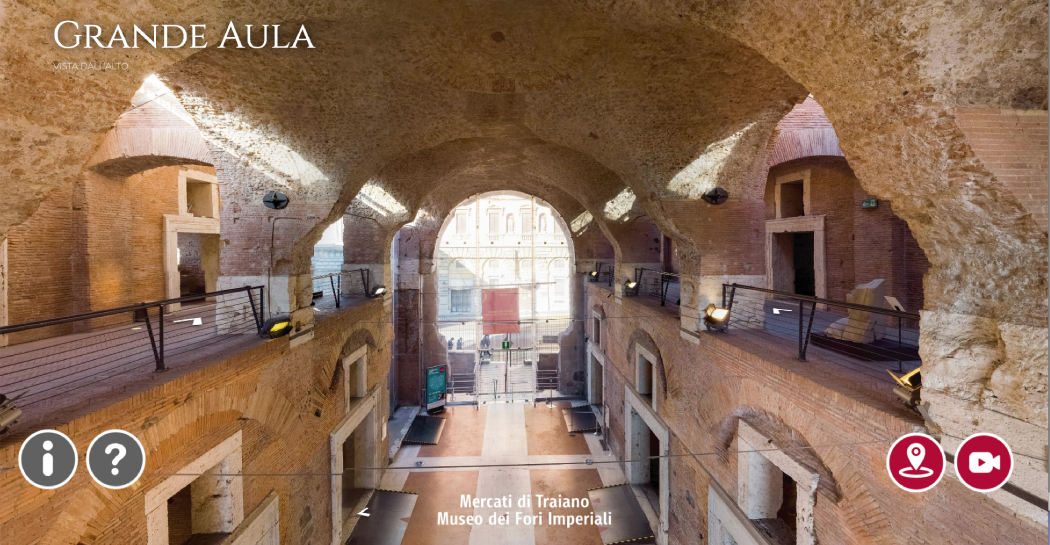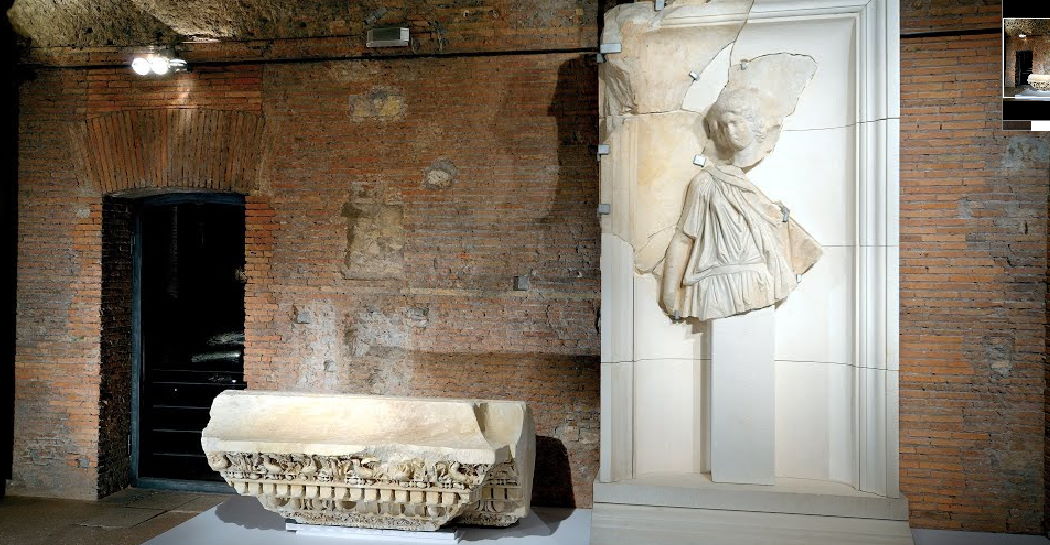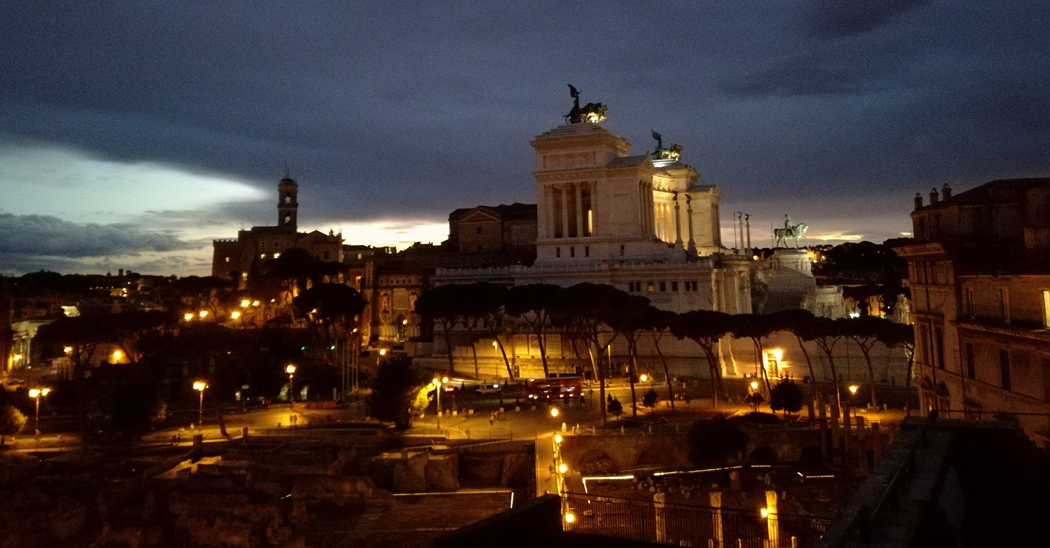Columna
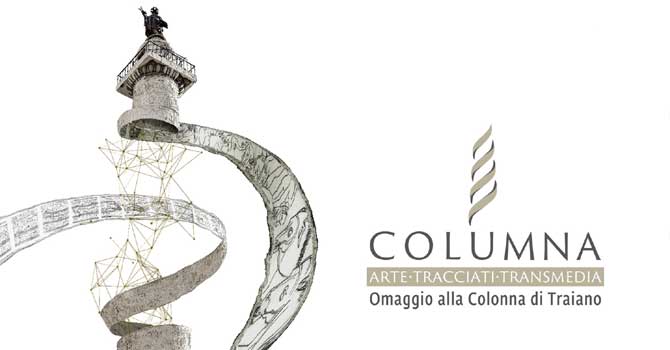
Communicating archeology to a non-specialist audience: this is the challenge of this exhibition celebrating the 1900th anniversary of the Trajan's Column.
The Markets of Trajan are a complex of buildings, which are separated by real city streets and articulated on six levels, built in the early second century AD, at the same time the Forum of Trajan. Today, the upper part of the complex houses the Museo dei Fori Imperiali, which aims to present the architecture and the sculptural decoration of the Forum
The complex of the Markets of Trajan and the Museo dei Fori Imperiali were, and still are, the subject of extensive restoration and enhancement, designed to offer the public unusual spaces and materials.
As part of these activities, the contribution of the University of Arkansas Rome Center ( UARC ) is particularly valuable, and through the skill and enthusiasm of their students they helped to bring out from deposits new fragments and present them to the public with the support of new technologies, a sort of " behind the scenes" of the archaeologists' work.
The project Columna. Inside/Exit - A tribute to the Trajan's Column was born from these premises, and in connection with the 1900th anniversary of the Column. An unconventional exhibition taht aims to connect past and present though the use of images, words and feelings, cultural influences and current technologies.
The exhibition consists of two installations, one artistic and multimedia, and the display of the Tabula Militaris Itineraria, the oldest paper travel of the Roman Empire in the first edition in Italian press.
TABVLA MILITARIS ITINERARIA
Exposure of the oldest travel paper of the Roman Empire in the first press edition in Italian
The Cultural Association Giovane Europa presents the work "Tabula Militaris Itineraria", the oldest travel map of the Roman Empire in the first printed Italian edition, from Gianni
Brandozzi’s collection of Ascoli Piceno. The Tabula Militaris Itineraria, also known as Tabula Picta, is the first paper where several roads of the world known by the Romans were draw at around the middle of the 4th century; the oldest manuscript copy was made in the 12th or 13th century. It is a parchment, divided into 11 segments, about 7 meters long and 34 cm high, currently preserved at the National Library in Vienna.
The Tabula Militaris Itineraria on exhibit here, it is the first printed edition, published in Italy, in the region Marches, by a Dominican monk Cristianopulo Podocataro, by the will of the bishop of Loreto and Recanati, Stefano Bellini, noble of Osimo. In its accompanying volume published in 1809, Podocataro summarized his latest studies on the Tabula, supplementing and correcting the work of previous centuries scholars. The card, printed in Iesi, in the Piceno area in 1793, is set up by twelve etching sheets, in
relationship one to another. The work is now in the collection of Gianni Brandozzi of Ascoli Piceno who will ensure its preservation and enhancement.
HYPERCOLUMNA
The HyperColumna project is a new approach to communication, since it does not consider visitors as passive culture recipients, but aims to involve them in a personal and
free process of knowledge. The project combines the possibilities brought by information technology with a hypermedia content platform, inspired by the frieze of Trajan's Column: HyperColumna brings to life the relationships between monuments, characters, historical events and places depicted in the very long bas-relief, connecting them with their multiple contexts.
Within the installation at the Trajan’s Markets - Museo dei Fori Imperiali a pilot version of the system will be hosted, in collaboration with the University of Arkansas Rome Center. Furthemore the platform aims to a new kind of access to the technological interface. It is a first taste of the project, in order to give an idea of the flexibility and of the interaction and involvement potential for the user, who can wander freely within the narratives and related contents to fulfill his own various interests, driven by the curiosity and by the pleasure of first-person discovery and enjoying an innovative cultural experience. HyperColumna restores all its original communicative value to the Trajan’s Column as a
spatial and chronological access key: through it, the visitor will see the surrounding archaeological heritage through different eyes: no longer as a silent witness of the past, but
as part of a talk that reaches his present.
COLUMNA MUTĀTIO - ITINERARIA PICTA
The paper installations drawn with graphite “Columna mutātio - Itineraria picta”, that the artist created for this occasion, with an exhibition designed by the architect Pietro Bagli
Pennacchiotti, are inspired by itineraria picta, volumina and triumphal paintings, reference sources of Apollodoro of Damasco, designer of Trajan’s Column and of the column’s
frieze. The “connoted” papyri, light since they are “emptied of substance”, infinite since they’re fragments without beginning and without ending, suggest the compositional
pretext of the rolled up tape, wandering horizontally and vertically in the Great Hall. The contamination of the picture of the frieze’s representation through the interpretation of her artistic research, customized by metamorphosis and by mutation, takes place through pictures joined in a flowing course, continuum of evocations in an almost ritual
progression. The digital prints and the bas-relief pictures become power points in informal relationship with the original column, supposedly coloured. The new “itineraria picta”
create selective courses on the various themes represented: the harmony of the human body, roman and dacian physiognomies, their clothes, the recognizable sarmati-roxolani, Trajan, Decebalus, the bridge over the Danube, the military clothing, the war marchines, the god Istro-Danube, the military camps, the landscape, the animals, as the cow, the pig, the horse, the bull; the god Jupiter, the night, the river, the trumpets, the eagle, the cities, the games, the Dacian women, the kids, the military doctors, the battle scenes, the wheat harvest, the names of the Dacian localities and the use of essential elements as fire and water. The Trajan’s column represents the first visual tale of history, born to celebrate the conquest of Dacia by the Romans and she has become through time it has become the symbol of an inseparable historical link between Italy and Romania in the new Europe. This change of meaning acquired a strong multicultural value, as a source of inspiration
for the “new history” created on the research of a common denominator of past and present values.
Information
7 December 2013 - 23 February 2014
Tuesday-Sunday: 9.00 - 19.00;
24 and 31 December: 9.00 - 14.00;
Last admission 1 hour before closing time.
Closed: Monday, 25 December 2013 and 1 January 2014.
Museum + Exhibition "Columna. Arte-Tracciati-Transmedia. Omaggio alla Colonna di Traiano" (7.12.2013-23.2.2014)]
Adults: € 9,50;
Concessions: € 7,50;
Roman Citizens only (by showing a valid ID):
- Adults: € 8,50;
- Concessions: € 6,50;
Tickets can also be purchased with a credit card and ATM
tel. +39 060608 (daily, from 9:00 to 21:00)
Promoted by: Roma Capitale, Assessorato alla Cultura, Creatività e Promozione Artistica – Sovrintendenza Capitolina ai Beni Culturali, United States Embassy to Italy, Association of American collage and University Programs in Italy and University of Arkansas.
Acea
Banche tesoriere di Roma Capitale: BNL Gruppo BNP Paribas, Unicredit, Banca Monte dei Paschi di Siena
Finmeccanica
Lottomatica
Vodafone
Atac
La Repubblica
HyperColumna Technical sponsors: Virtutim s.r.l.s. Servizi per l’Archeologia; Tib; Officina 14; altrospazio; Floaty s.r.l.;
Columna Mutātio – Itineraria PictaTechnical sponsors: Fabriano; Spedart;
Exhibit Media Sponsors: Archeo; Archeomatica;
Tabula Militaris ItinerariaTechnical sponsors: Giovane Europa Associazione Culturale;
Museum Services: Zètema Progetto Cultura.


























